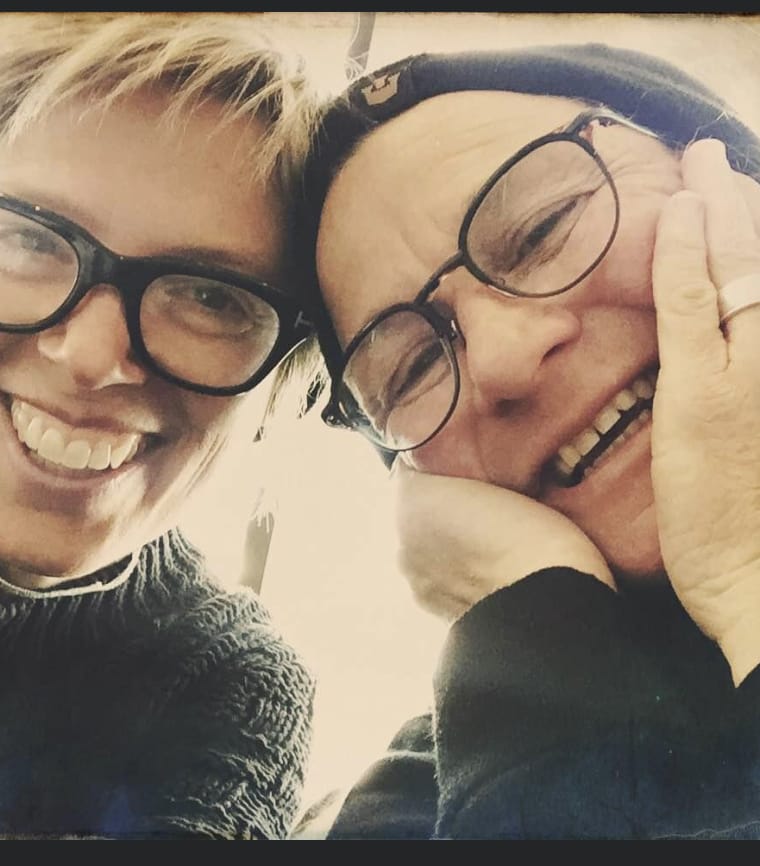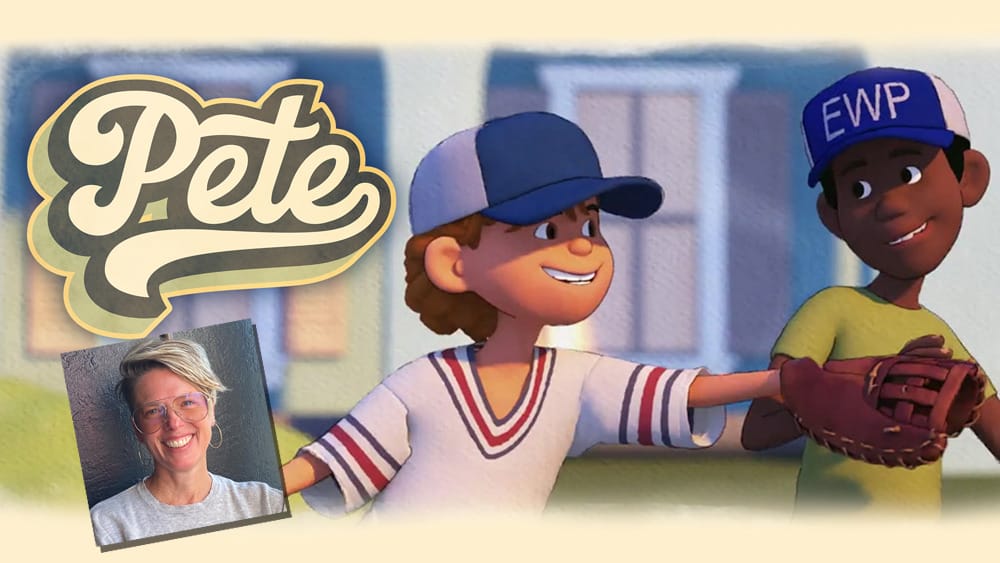Bret Parker, director of the short film Pete, didn’t take the conventional route when it came to her career in animation. She was hired at PIXAR in 1996 for a temp job as a production assistant that was supposed to last three months.
“I remember I even quit another job to take it, and my Mom was really worried about that decision,” Parker admitted to GLAAD in a recent interview. At the time, I had some production experience, but no animation experience and had definitely never thought about animation as a career.”
While at PIXAR, Parker started to realize similarities between animation and her background in dance and theater: timing, choreography, acting, movement analysis.
“I think the moment I realized that I could have a job in the arts where I could create art AND actually make a living I was all in,” she said. “From that moment I just started staying late at work and learning the principals of animation as well as the technology… I had some amazing mentors helping me along the way.”
She put together a reel which she jokingly hopes no one ever sees, but she had some amazing mentors including PIXAR head honcho Pete Docter, who brought her on as the first Fix Animator at PIXAR on A Bug’s Life (1996).
From there, Parker started a 26 year career at the trailblazing animated company under the Disney umbrella. She worked on Finding Nemo (2003) and The Incredibles (2004) as well as its sequel in 2018. While PIXAR was developing Brave, Parker shifted her focus, becoming Animation Tools Lead and an integral part in the design and development of the current animation software used at PIXAR, known as Presto.

In 2019, along with her wife Pete Barma, Parker directed and produced her first feature length documentary, Through the Windows, which they made through the Pixar Cooperative Program.
Pete, which is inspired by her wife (who co-wrote the short and served as executive producer) premiered earlier this year at the Tribeca Film Festival and went on to have a thriving festival run. It marks her second film and tells a very heartfelt tale about gender identity through the lens of the titular character and Little League Baseball. Pete is a story about the people who inspire change by trying to be themselves, and the superheroes who allow that change to happen.
Parker told us more about her craft and the impact Pete has when it comes to LGBTQ storytelling.
How has your work on The Incredibles and Finding Nemo honed your story telling skills and helped you create Pete.
I’ve had the amazing honor of working with incredible film makers in my career – Brad Bird, on The Incredibles, Andrew Stanton, on Finding Nemo — both one of kind directors and storytellers, and without a doubt I would not be where I am today or have been able to create Pete without standing on the shoulders of the talent I was surrounded by during my career.
Filmmaking is a collaboration — and really any great film is not only about the vision of the director, but also what the crew brings to the film. Early in my career, I think I was more focused on just mastering the skills of animation, but even in trying to do that, you start to absorb information which helps you become a better filmmaker/storyteller. For example, for any series of shots I’m animating, I need to understand the arc of the characters — both within that scene and where they are within the arc of the film. I need to understand how the timing of the acting can sell a moment or ruin it. How the camera can help support an emotional moment or an acting beat, and how to best utilize that…. so in the beginning of my career, I was more focused on building moments, but as time went on, I became more focused on building stories.
In terms of animation, where did you look to to help inspire the world created with Pete?
Since this is based on a true story about my wife Pete as a child, and takes place in 1975, much of the inspiration is from the art and colors and books that we grew up with. For art direction, for example, I was really inspired by the original Winnie the Pooh watercolor illustrations by E.H. Shepard as well as Bill Watterson’s watercolor paintings for Calvin and Hobbes.
I grew up with Winnie the Pooh — and I really wanted to marry the look and style of the animation with the story. So even though the animation is done in 3D, we animated in more of a 2D style and flattened the look to feel more like a watercolor painting that came to life. Developing the look of the film was one of the hardest aspects to figure out, and there was still more I wanted explore, but I am really happy with where we landed.

With the red hair, Pete looks like her family can be descendants of Merida from Brave. Was that intentional?
Not something we ever thought of, but Pete would certainly be proud to be a descendant of Merida. Guess we’ll have to do a 23 and Me test to find out.
Pete had a solid festival run in 2022. What is one reaction to the film that has stood out to you?
We premiered the film about one and a half years ago, and at this point we’ve had the honor now to participate in over 40 film festivals all over the world, and we’ve been blown away by the overwhelming support and positive response the film has received. I’ve had parents reach out to tell me how our film opened conversations with their kids around identity…we’ve had kids reach out who said they shared similar experiences to Pete and were inspired to simply be themselves. Especially at a time where tensions are so high in the US around gender identity, and it’s a topic that has become so politicized, to be able to offer a shared experience for kids, or open doors to communication is beyond anything else we could ask for.
More and more, family and children’s programming has become more inclusive with queer content. What would it have been like for you to see a short film like Pete when you were a child?
I think to see representation in media in a positive light gives you the permission to see yourself in that light. It allows a child, for example, to simply be themselves and know that’s ok, even if it isn’t mainstream. Studies have show that representation and even one ally reduces the risk of tragedies like suicide attempts in LGBTQ+ youth by over 40%. For me and for my wife as well, I think seeing a short like Pete would have boosted our confidence in our sense of identity and shown that we weren’t alone.
What do you hope people take away from Pete?
When kids are left to their own, acceptance and inclusion comes easy. We hope through Pete, we can continue to inspire change and erase the notion that difference equals exclusion. Pete is based off the true story of my wife, so as an inspiration, change doesn’t always have to be grand – it can happen on a small sandlot in Winter Park, Florida and forever change a community.













